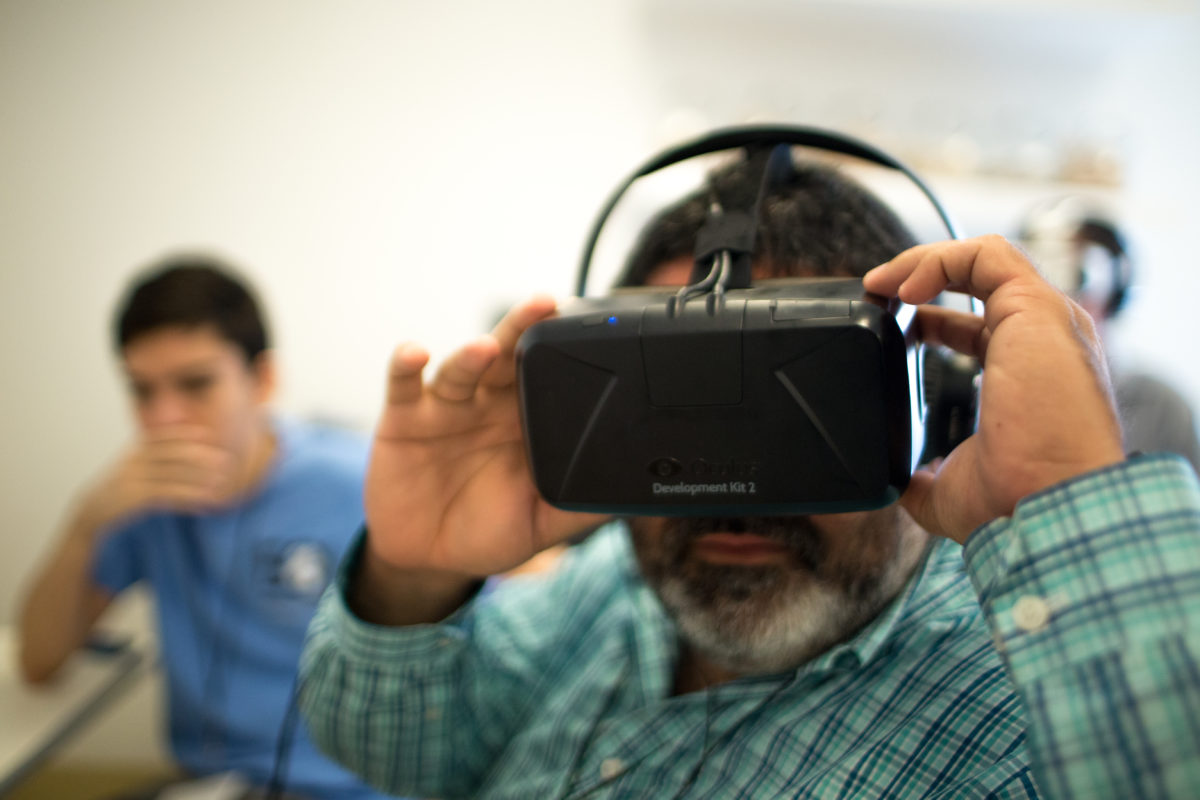To me, as cool as virtual reality is, it still feels like a bit of a gimmick. That’s probably because my interactions with the technology are limited to demos, experimental short videos and the like. But if VR is going to live up to its hype, this needs to change.
Columbia, Md.-based Sensics, a company that’s been working with VR for the past 15 years, might just have the answer. Meet the Sensics Home Suite.
“It’s almost like a restaurant — it has a front of the house and a back of the house,” Sensics CEO Yuval Boger explains. At the front of the house, Home Suite makes it easy for a consumer to interact with a range of videos and games in VR, sort of like stepping into a virtual reality version of your Netflix homepage.
And on the backend, Home Suite answers that age old question: How can we make money from this?
On the frontend, the consumer puts on their VR headset of choice and steps into the home screen, where they can see available videos and games — both that they own and to purchase. There’s also a “protector” feature that keeps the consumer safe inside a designated VR play area (key for many VR games) and a notification center that shows the immersed consumer things that are happening in the outside world like the caller ID of an incoming phone call.
“You can get a lot of people to try VR for five minutes,” Boger said. “But to really get them engaged they need to be in a comfortable environment and connected to the other things going on in their lives.” This is what Home Suite enables.
Then, on the money-making backend, Home Suite allows for advertising in VR which, Boger argues, could be great for consumers too as it might push down the high prices of VR hardware and content. The Home Suite also has a store feature where consumers can buy and download new VR content. This, Boger told Technical.ly, could also be used for shopping (for physical products) in VR. This isn’t a popular concept just yet, but with something like Home Suite it could be. “It’s a new market and we sort of give the tools for people to start experimenting with it,” Boger said.
Is there really enough VR content out there to make Home Suite an engaging experience? “There’s sort of a chicken and egg problem,” Boger admitted. There’s not a ton of VR content available, but that is at least in part because there aren’t a ton of consumers for that content. It’s also because the content is hard to monetize. With Home Suite, Sensics thinks it has found the solution to all these problems.
Of course, in order to call this a success, consumers and content producers and advertisers need to think so, too. What will it take to make you a VR believer?







